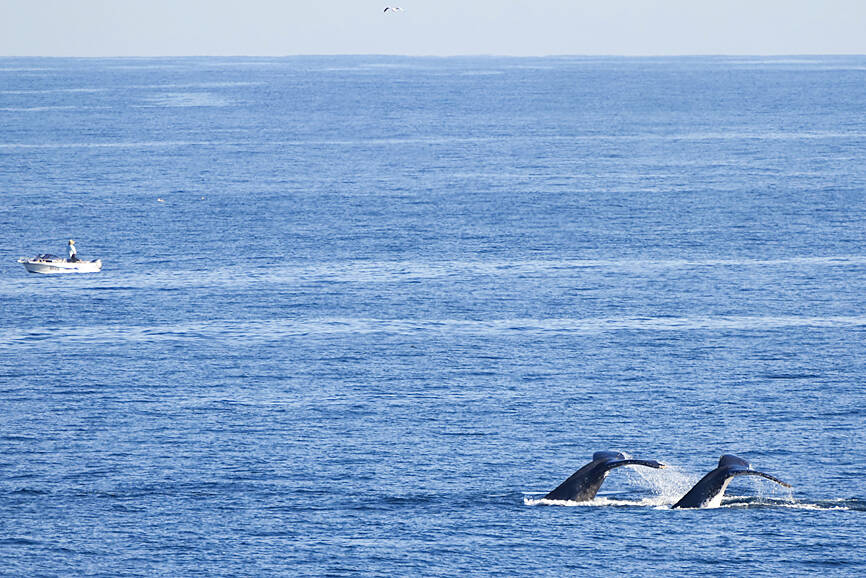Researchers unveil video of nursing humpback
Bringing Taiwan to the World and the World to Taiwan Researchers from the Macuaticos Foundation have released a rare footage of a whale calf nursing on its mother in the Gulf of Cupica off Colombia's coast. The 900kg calf is then seen rising to the surface to breathe and dispersing a trail of milk. This is the first time such feedings have been captured on camera twice before. The feat was made possible with sensors installed for just a few hours on the back of the calf with suction cups, as well as a device to record the sounds the whales make. The waters off Colombia play host to humpbacks, which can grow up to 17m long, weigh about 40 tonnes and travel about 8,500km every breeding season.

Pubblicato : 2 anni fa di 台北時報 in World
A trail of milk disperses in the depths of the Pacific off Colombia’s coast as a whale calf breaks away after nursing on its mother in rare footage scientists hope would contribute to humpback conservation.
The 900kg calf is then seen rising to the surface to breathe in the Gulf of Cupica.
Such feedings have only ever been captured on camera twice before, said biologist Natalia Botero, whose team at the Macuaticos Foundation filmed the intimate moment between mother and calf in August last year.
“Despite decades of efforts by thousands of researchers, hours of work, collaborations, lactation recordings are extremely rare,” she said at the first public presentation of the video in Medellin last month. “From a scientific point of view this is an important step, but also for conservation.”
The feat was made possible with sensors installed for just a few hours on the back of the calf with suction cups, so as not to hurt it.
The system included a camera and GPS, as well as a device to record the sounds the whales make.
After feeding for several months off the Antarctic Peninsula and the Strait of Magellan in Chile, thousands of whales make the long journey every year to the warm waters of the tropics to breed along a stretch of the Pacific from Costa Rica to Peru.
From June to November, the waters off Colombia play host to humpbacks — giant cetaceans that can grow up to 17m long, weigh about 40 tonnes and travel about 8,500km every breeding season.
“While humpbacks are now protected from commercial hunting, they still face a variety of threats,” Botero said. “By learning more about their behavior ... we can promote appropriate conservation actions.”
